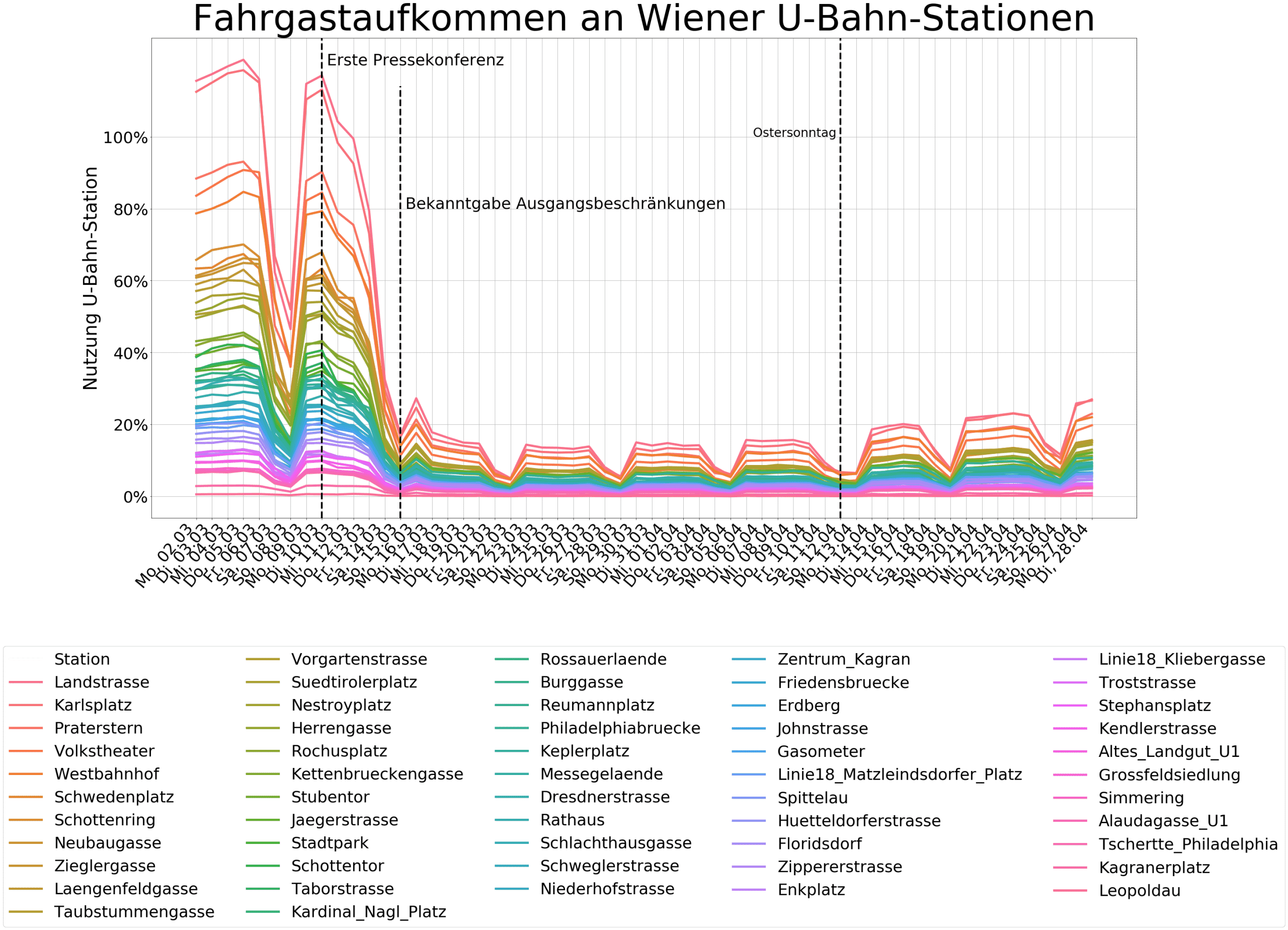FOR MARCH, PLEASE FOLLOW THIS LINK [IN GERMAN]
OVERVIEW APRIL
- April 30: Very very slow return to normal …
- April 29: Moving patterns in Austria
- April 17: Moving around around Easter
- April 7: Easter holidays and warm weather lead to a slight increase in moving radius
- April 3: Moving radius shows that people stick to governmental measures
APRIL 30, 2020
APRIL IS ALMOST HISTORY…
TRAFFIC AT VIENNESE SUBWAY STATIONS STILL FAR BELOW NORMAL:
0 TO 500 METER RADIUS:
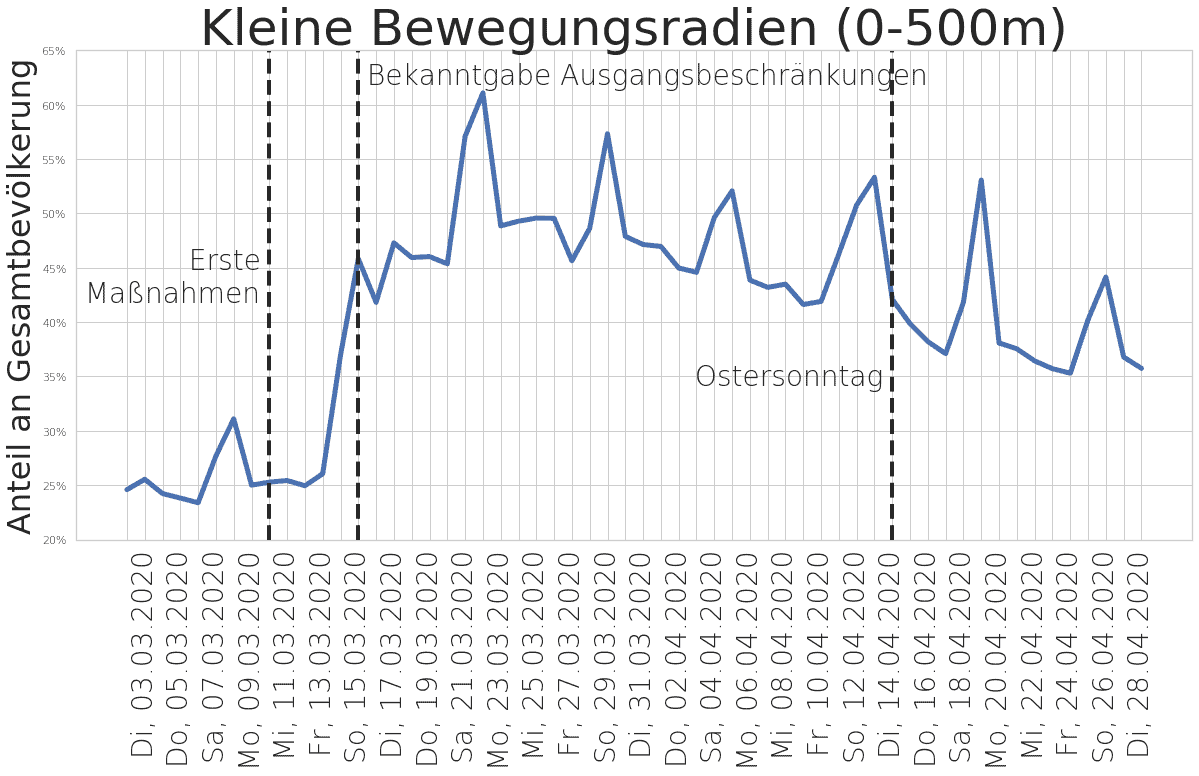
PEOPLE MOVING BETWEEN 500 TO 5000 METERS:
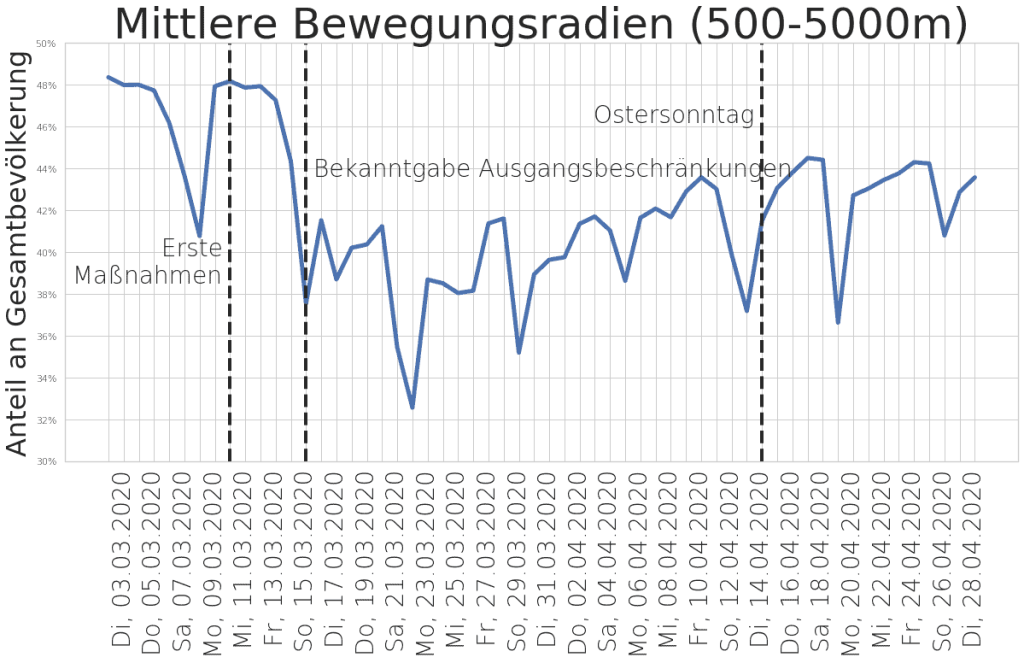
A RADIUS WITH MORE THAN 5 KILOMETERS:
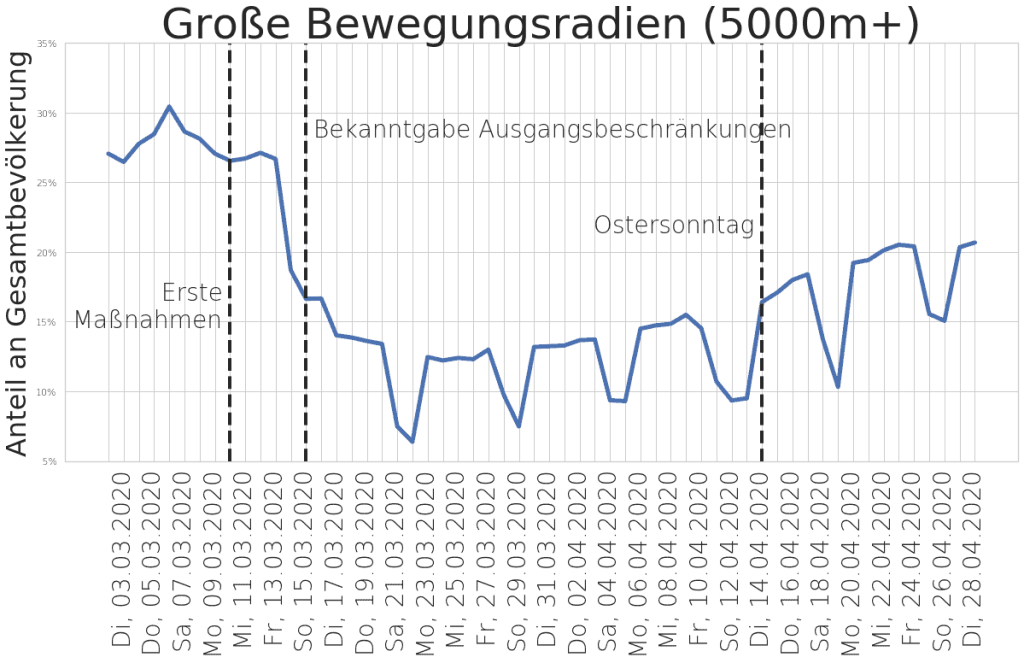
APRIL 29, 2020
UPDATE TO MOVEMENT RADIUS IN AUSTRIA
TRAFFIC AT VIENNESE SUBWAY STATIONS STILL FAR BELOW NORMAL:
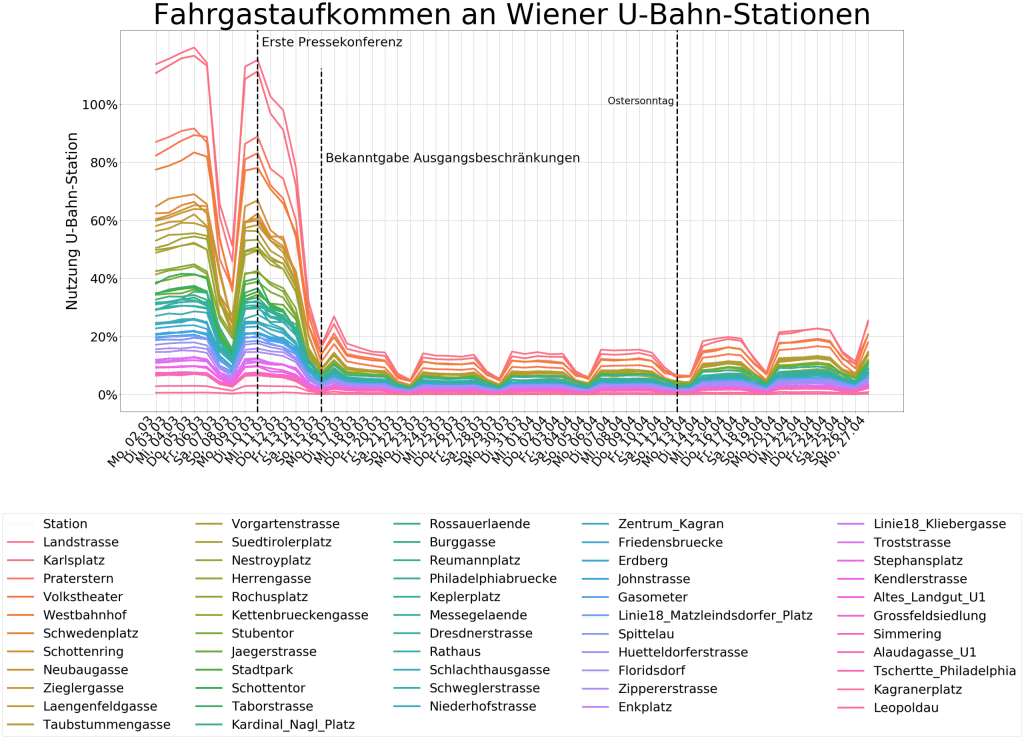
0 TO 500 METER RADIUS:
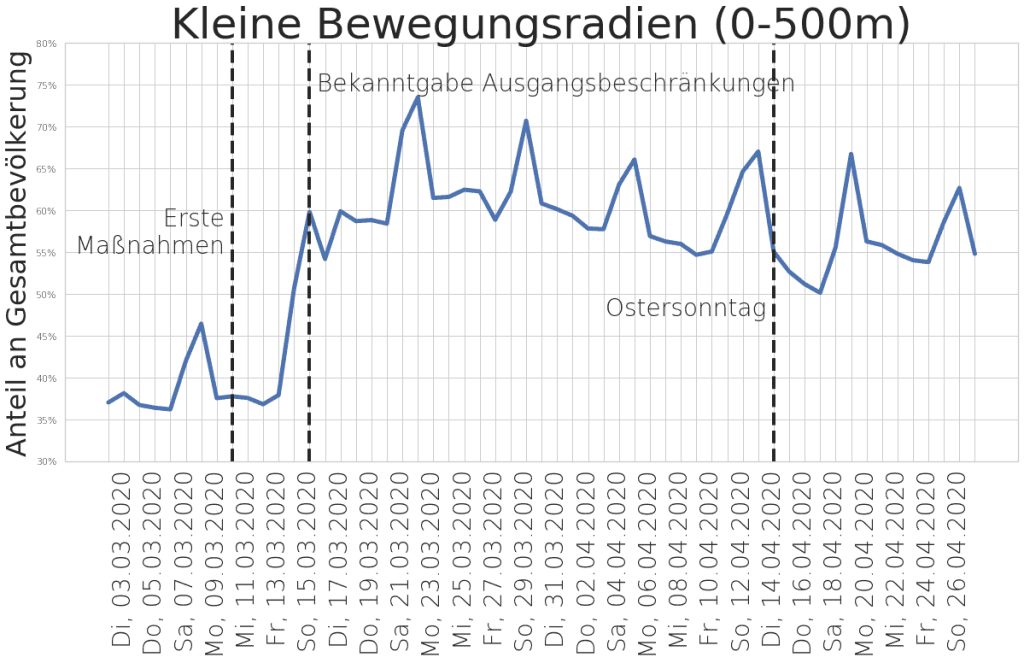
PEOPLE MOVING BETWEEN 500 TO 5000 METERS:
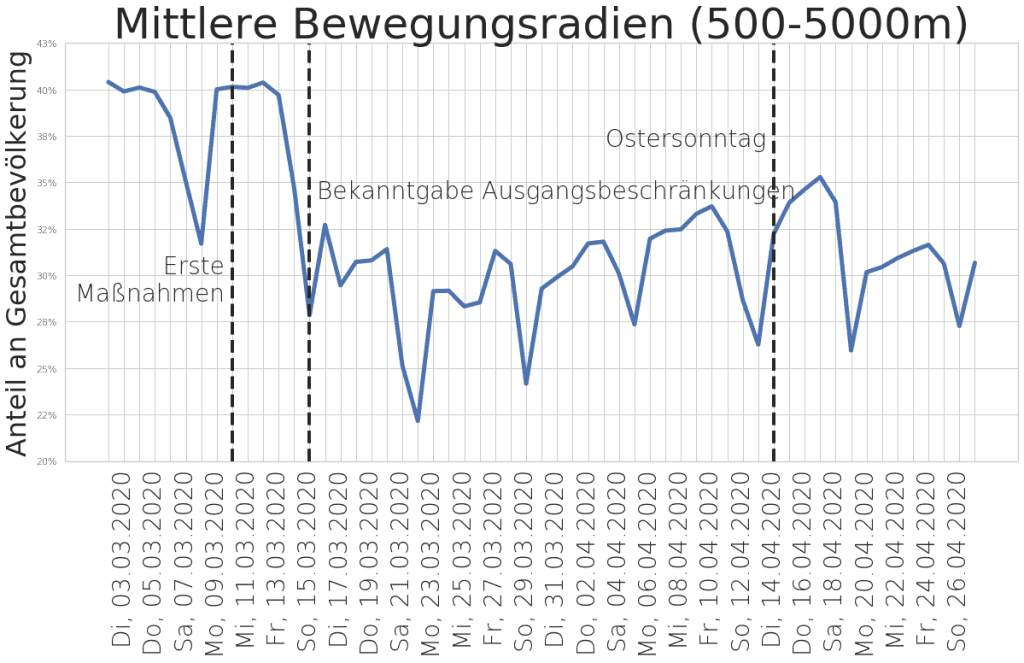
A RADIUS WITH MORE THAN 5 KILOMETERS:

A RADIUS WITH MORE THAN 5 KILOMETERS:
UPDATE TO MOVEMENT RADIUS IN AUSTRIA
The far reaching restrictions imposed by the Austrian government are working impressively well. In the week before and after Easter the average range of movement of people in Austria was significantly reduced.
Before the crisis, the average range of movement averaged over the population was about 14 kilometres per day. After the announcement of the restrictions, it almost halved to an average of 8 kilometres. Due to the easing of measures after the Easter weekend, the radius of movement almost reached the previous values again: more than 12 kilometres.
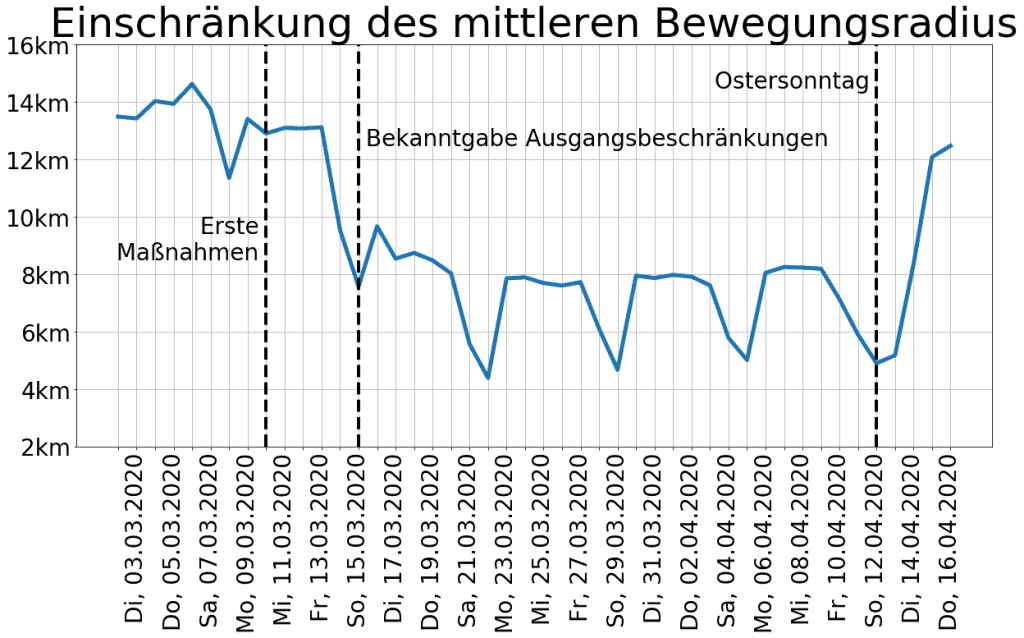
“A more differentiated picture emerges if we break down the data by groups of people who generally tend to travel short or long distances,” says CSH’s Tobias Reisch.
The proportion of the population with a radius of movement of less than 500 meters on a weekday has risen significantly since the initial restrictions were imposed: from 45 percent to about 65 percent. “So many more people than usual have restricted themselves to short distances or have stayed at home completely,” explains Reisch. After Easter the figure dropped again: on 16 April only about half the population was restricted to a radius of less than 500 metres.
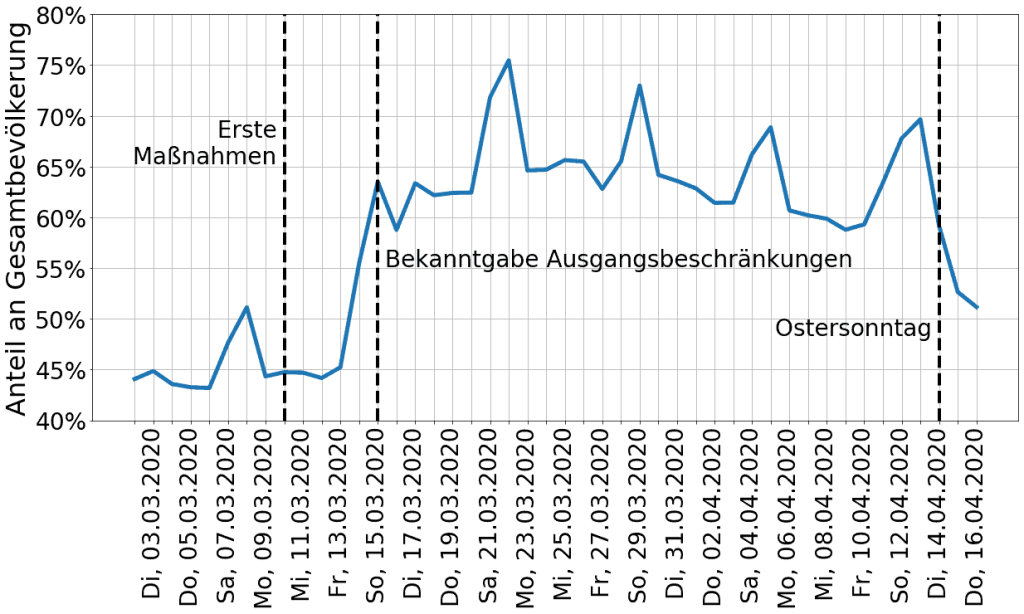
An increase was found for radii between 0.5 and 5 kilometres. Almost the same number of people as before the crisis—around 35 percent—are moving within this radius.
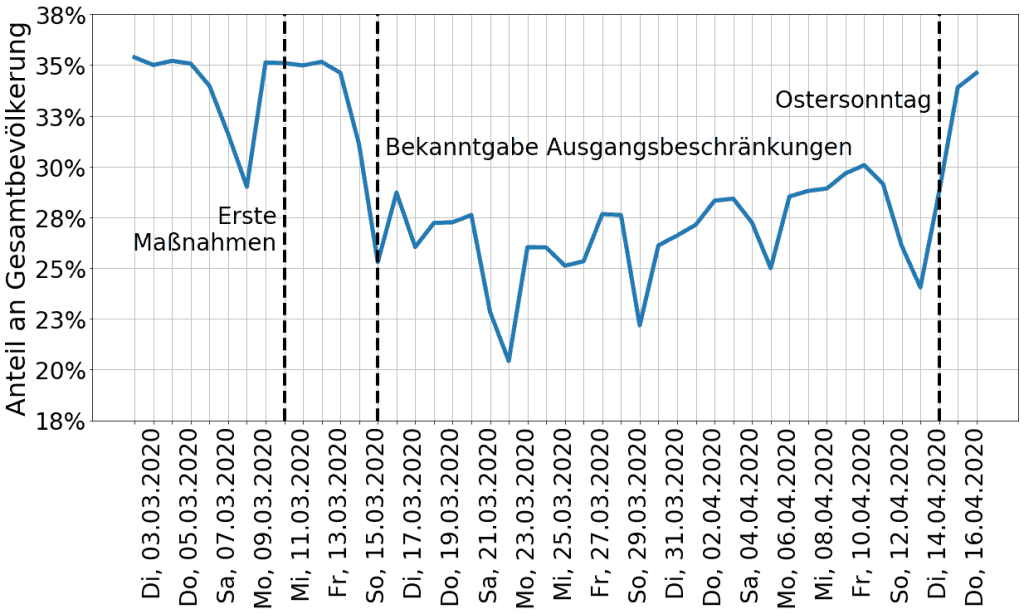
The researchers see the biggest difference compared to the past in the group that is used to covering the longest distances. “Here, the values remain well below pre-crisis levels,” adds Georg Heiler. Even over Easter in this group was no significant increase. “So most people in Austria apparently followed the government’s calls and didn’t travel to distant weekend homes or to visit their families or friends”.
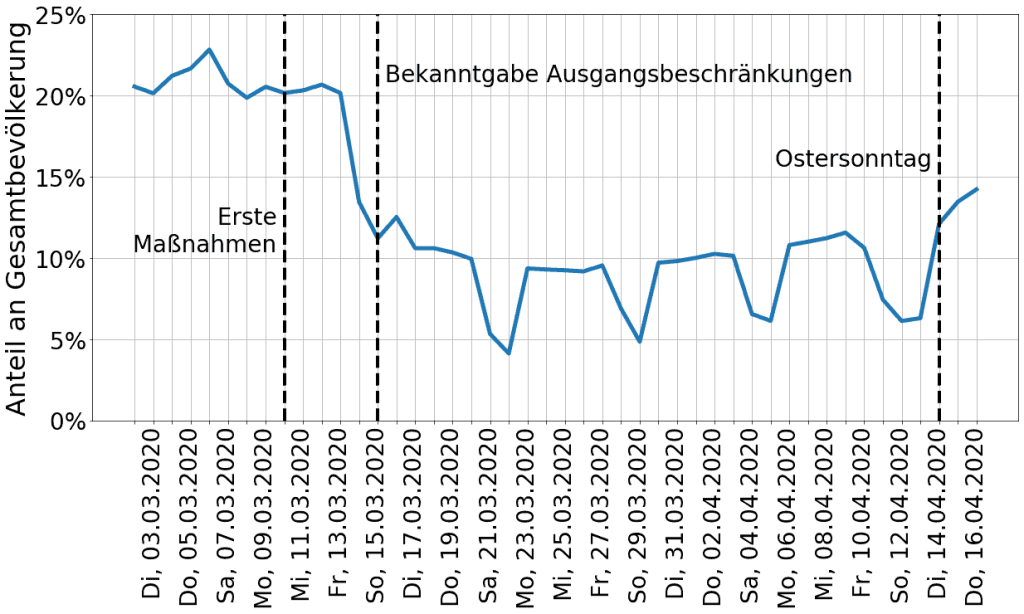
NO DRAMATIC CHANGES WERE SEEN AT VIENNESE SUBWAY STATIONS:
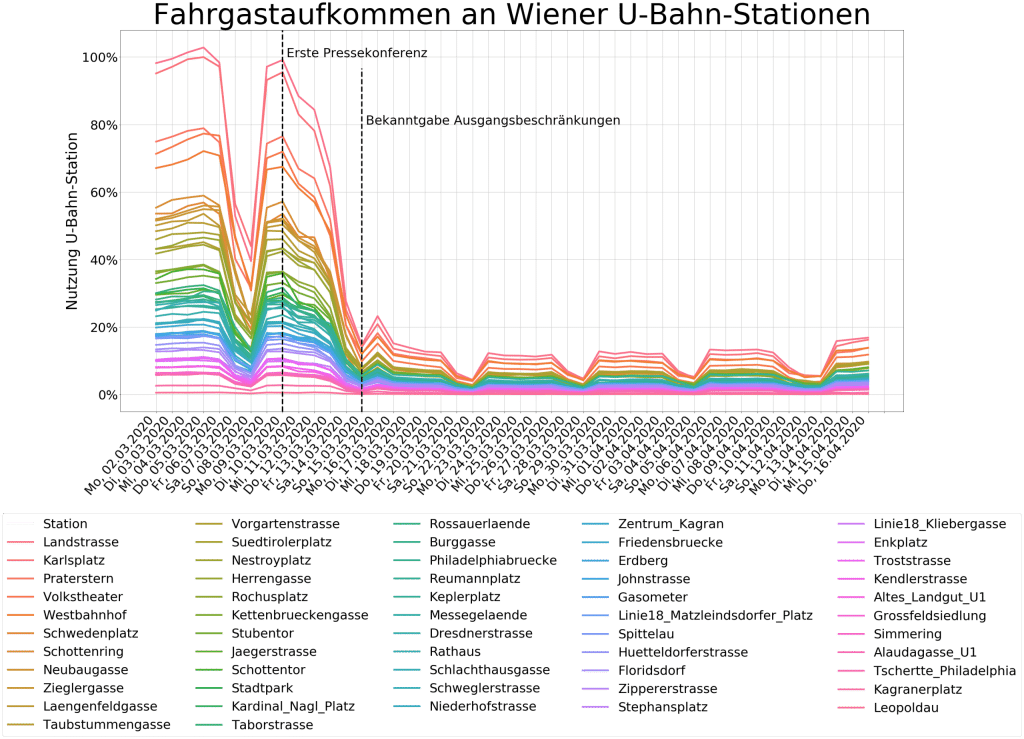
APRIL 7, 2020
AN UPDATE TO AUSTRIA’S MOVEMENT RADIUS
IN PRINCIPLE, PEOPLE STICK WELL TO THE GOVERNMENTAL MEASURES:
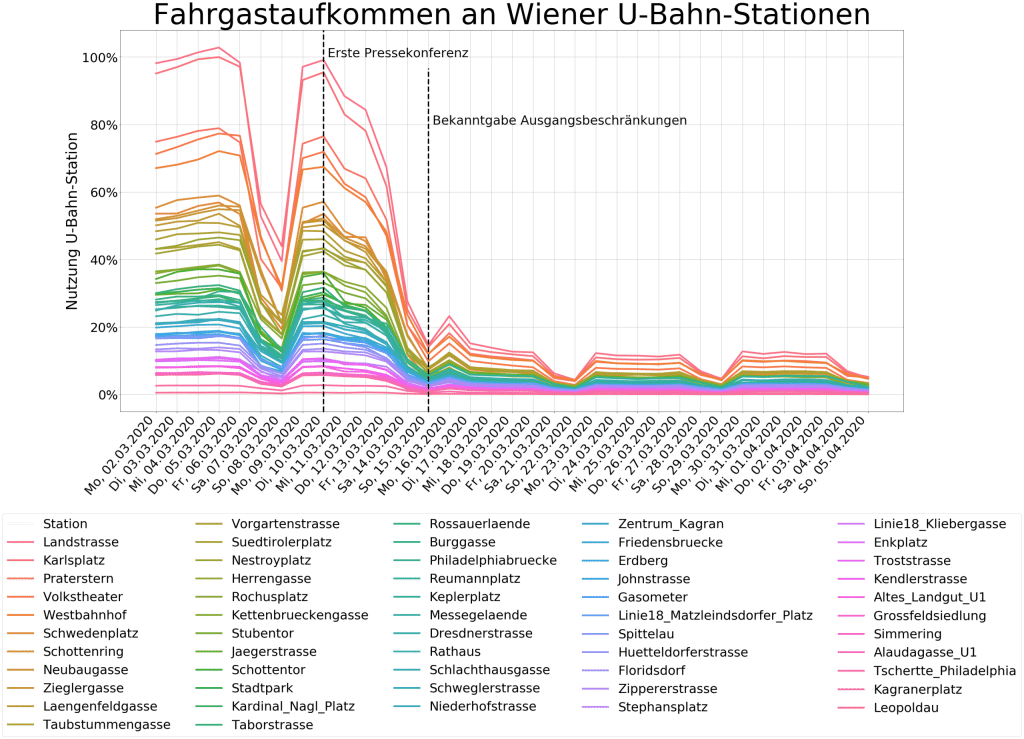
YET, A CLOSER LOOK SHOWS A SLIGHT INCREASE IN MOVING PATTERNS DURING THE LAST WEEKEND, COMPARED TO THE TWO WEEKENDS BEFORE.
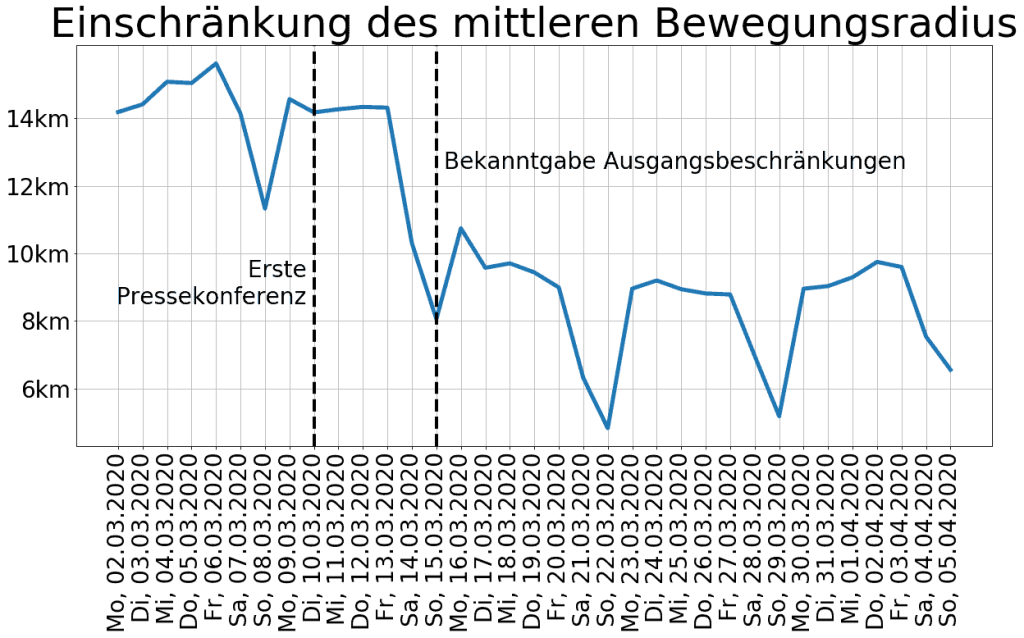
APRIL 3, 2020
NEW GRAPHS SHOW ONCE MORE HOW MUCH THE RADIUS OF MOVEMENT HAS CHANGED IN AUSTRIA
SUBSTANTIALLY LESS TRAFFIC AT VIENNESE SUBWAY STATIONS:
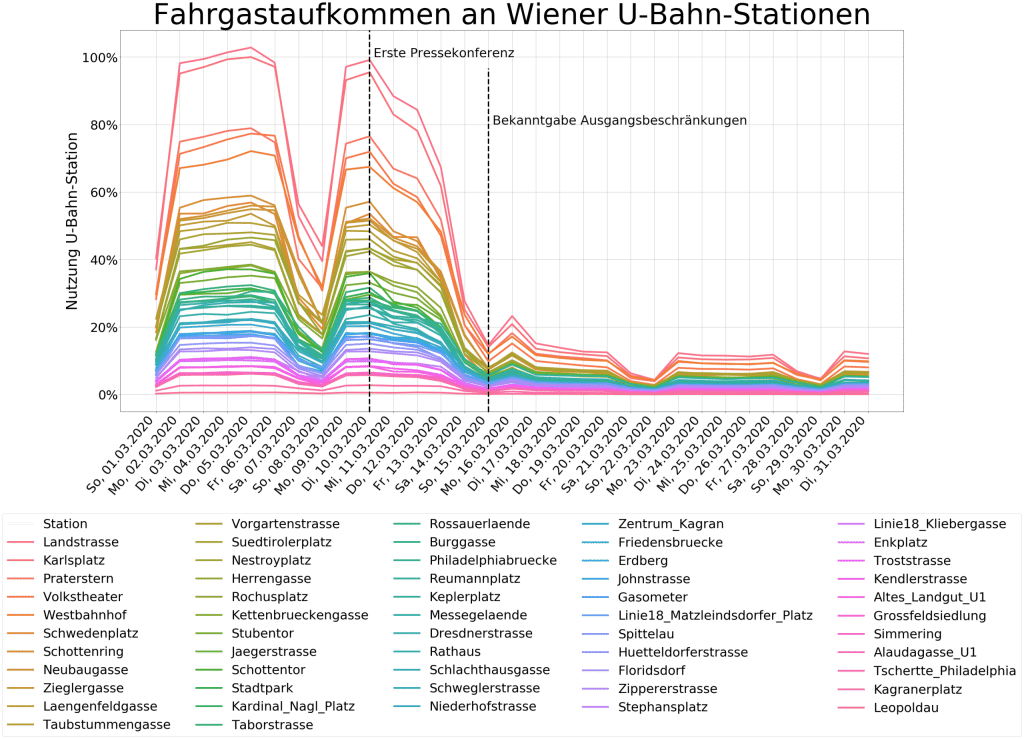
MUCH LESS TRAFFIC THROUGHOUT AUSTRIA IN WEEK MARCH 23—28, COMPARED TO WEEK MARCH 2—6, 2020:
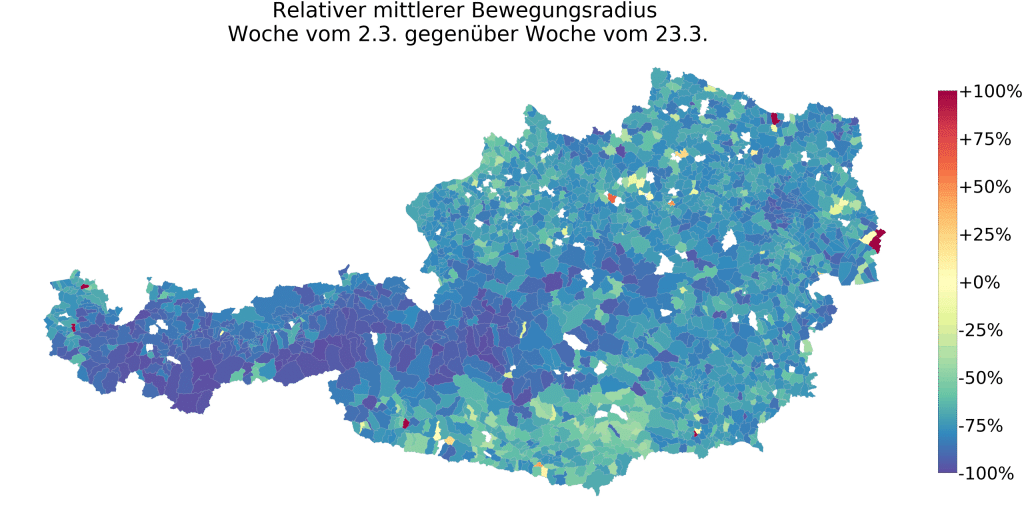
REDUCTION OF MEDIUM RADIUS OF MOVEMENT IN AUSTRIA:
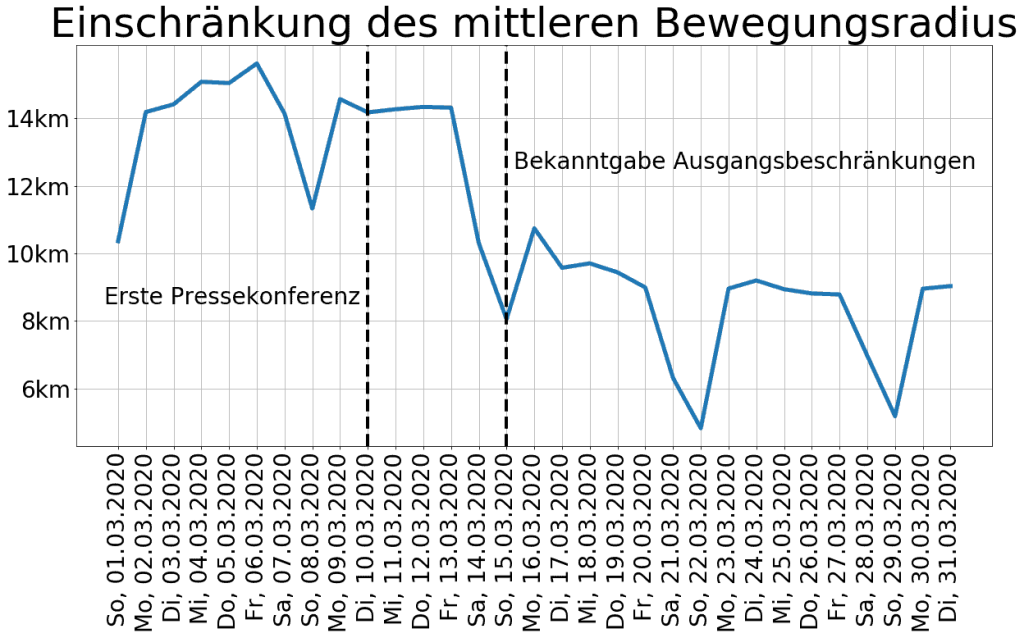
This is a publication of TU Wien in cooperation with CSH. Various data sets including aggregated and anonymised telecommunication data, processed in a GDPR compliant way, were used for this study. The results were also made available to the Austrian authorities in connection with combating the corona epidemic.

